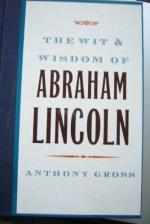|
This section contains 297 words (approx. 1 page at 300 words per page) |
World of Invention on Abraham Lincoln
As a young man, Lincoln had taken flatboat trips down the Ohio and Mississippi rivers. While traveling, he saw other boats become unavoidably grounded on sandbars that were created by the river's shifting currents. His interest sparked by the sight, Lincoln began devising a plan to alleviate such difficulties. He sketched his ideas and whittled a wooden model of his device in his spare time.
Lincoln's plan utilized adjustable buoyant air chambers to elevate a steamboat or other river vessel; the extra buoyancy provided by these "airbags" would help ships float safely over treacherous shallows and sandbars. Lincoln's idea was patented under the title "Buoying Vessels over Shoals."
Lincoln was a staunch supporter of the United States patent system because he felt it "added the fuel of interest to the fire of genius in the discovery and production of new and useful things." These words are engraved above the entrance to the Department of Commerce building in Washington, D.C.
Lincoln patented his invention in 1849 (Patent No. 6469), and although he delivered a model of his system of "buoyant chambers" to the United States Patent Office himself, he did little to promote his invention. It is thought that perhaps the heavy weight of his system of ropes, pulleys, and collapsible chambers might have caused the very problem he was trying to solve. Although Lincoln's political career left him little time to invent, throughout his Presidency he remained aware of the importance of new technology to American life. As President during the Civil War, Lincoln constantly pushed for such military innovations as breech-loading rifles, ironclad naval vessels, and balloons for aerial reconnaissance. Lincoln was the only President ever to own a patent. The model of his own invention is in the Smithsonian Institution, in Washington, D.C.
|
This section contains 297 words (approx. 1 page at 300 words per page) |


